Reliable armor of fire fighters - a firefighter's combat uniform: photo, purpose, device, characteristics
Firefighter's Combat Clothing (FBO) is the most important personal protective equipment against dangerously high temperatures, harmful substances and toxins released during combustion.
It is intended for all fire brigade employees, including management personnel, gas and smoke defenders, interrogators, inspectors and drivers.
The design and characteristics of the fire uniform, the quality of its manufacture are the basis for the safe and efficient work of the fire brigade.
Specialized combat uniforms for firefighters are designed to protect the life and health of fire service personnel in normal and extreme situations when performing work duties. Fighting clothing for firefighters is used when fighting fires at all stages up to a fire storm.
The main factors against which CBB protects:
- emissions of open flames, sparks;
- high intensity of the shock flow of heat, increasing air temperature;
- smoke, loss of orientation due to low visibility;
- drop in oxygen levels;
- increased concentration of toxic substances released during combustion and thermal decomposition.
Additional hazards:
- glass, wood chips, protruding reinforcement, brick, concrete and wooden parts of destroyed buildings, structures, metal structures and vehicles;
- radiation and toxic substances released during the combustion of materials, technological systems, devices, chemical units and technological equipment;
- transfer of high voltage to conductive parts of metal structures;
- explosions caused by fire;
- the effect of the substances used to extinguish the fire on the body.
Uniform requirements
Basic requirements for combat clothing for firefighters:
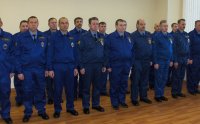
- maximum heat resistance;
- high resistance to aggressive action of acids and alkalis, toxins, poisons, radiation;
- enhanced strength properties of materials that protect against physical and mechanical stress.
Based on many years of experience in extinguishing fires of various difficulty levels general requirements were developed for the design of the BOP and its physical and mechanical characteristics.
Fighting uniforms for firefighters and the materials used in their manufacture should help fire service personnel to quickly, safely and effectively perform their functions in the fire extinguishing zone.
The design of combat clothing and firefighter equipment must:
- correspond GOST R 53264-2009;
- meet the requirements of ergonomics;
- have a loose fit and do not constrain movement;
- envisage possibility of quick donning uniforms without taking off your shoes;
- to ensure the ability to put on clothing in response to an alarm within the time interval established in the Standards for fire drill;
- have specialized reliable fittings without lacing and loops that can cling to objects;
- be made from materials that prevent the penetration of water, smoke and any aggressive media inside the uniform;
- protect from intense heat flux.
The design of a firefighter's suit should be combined and consist of a special topcoat with impregnation, a waterproof layer using materials with a polymer film coating, a lining with thermal insulation (removable) and a lining fabric.
Wet uniform fabric at low temperatures should not freeze and stay soft without losing its essential characteristics.
Besides, requirements provide:
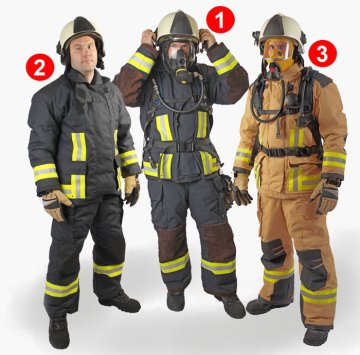
- the presence of thick fabric wristbands on the sleeves;
- the imposition of the jacket over the trousers at a length of at least 30 cm from the belt;
- presence on the jacket high gate(not less than 100 mm) for neck cover and inner lining made of cotton fabric to protect the skin from allergic reactions and irritation;
- fastening on clothes reflective linings made of fluorescent and luminescent material(width not less than 50 mm), located in the chest, back, in the lower part of the jacket, semi-overalls, on the sleeves, the total area of which is not less than 0.332 sq. m .;
- the presence of a lining on the back of the jacket with the inscription "fire brigade", easily visible in the dark;
- a hood that is used with a fire helmet;
- flaps and water drain holes on all outer pockets;
- separate a pocket with a moisture-proof flap for placing a radio station;
- the presence of belt loops on the jacket designed to fix the fire belt;
- making seams in accordance with GOST;
- joint sealing, which is carried out in the case of using a polymer-coated top material;
- ventilation holes if the mold is made of an airtight material.
It is required that the fittings, which are fixed on the upper cover of the uniform, do not come into contact with the inner heat-insulating layer.
Main characteristics and types
After many years of practice in extinguishing fires, the need arose classification of BOP, taking into account the degree of complexity of the fire, terrain and climatic conditions.
Today the classification of workwear for firefighters classified by levels of protection against high temperatures, since it was stated that it is the thermal factor that most often leads to a high percentage of injuries and deaths of personnel. In addition, fabrics that have increased resistance to high temperature currents also have better tensile strength characteristics.
BOP classification by thermal protection class.
| Main characteristics | CBB protection class | ||
| I | II | III | |
| Resistance to strong heat radiation, seconds | 240 | ||
| Resistance to open flame, sec | 15 | 5 | |
| Thermal conductivity in the range from +50 to +150 degrees | 0,06 | ||
| Temperature range, ° С | - 50 to +300 | –50…+200 | – 40…+ 200 |
| Resistance to gaseous environment at a temperature not exceeding +300 ° С | 300 | 240 | 180 |
| Resistance to contact with heating surfaces up to +400, seconds | 7 | 3 | 1 |
| oxygen index (percentage) | 28 | 26 | |
| BOP weight, kg | 5 | 6,5 | |
| Destination group | gas and smoke defenders | Command and enlisted personnel | Command staff, drivers, inspectors |
Below is a detailed description of the purpose, structure and characteristics of combat clothing for a firefighter of all levels of protection of Russia (BOP 1, 2 and 3), as well as a photo of a special protective uniform.
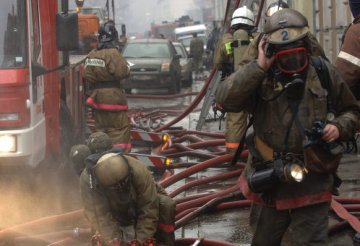 If you are interested, also learn more about - how to properly equip it and what requirements to focus on.
If you are interested, also learn more about - how to properly equip it and what requirements to focus on.
And you will find a lot of interesting things about the work overalls of emergency medical workers.
Class III Combat Clothing
Uniform III is produced using heat resistant vinyl leather and is designed to protect against dangerous environmental factors when serving outside the zone of heat flows of particular intensity, therefore, the level of protection for this type of BOP is somewhat lower.
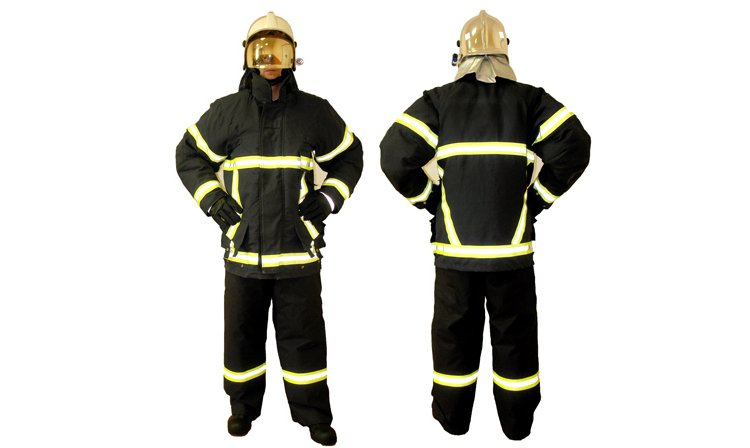
Vinyl leather is a flame retardant material that works well over a wide temperature range, from low to high. Vinyl Leatherette Form good protection against sparks and smoke... Fasteners - three carabiners, side seams are missing. The straps can be used to adjust the width of the sleeves at the wrist.
Class II Combat Apparel
Work suit II is made mainly from canvas fabric, which is processed with specialized formulations and passes the test with concentrated acids.
This form has characteristics almost similar to BOP I, and saves personnel from powerful heat flows, smoke, an aggressive environment, fragments and sharp objects of destroyed structures during explosions. She protects the skin from caustic solutions of aggressive substances, flames, from water and strong wind, right up to the storm.
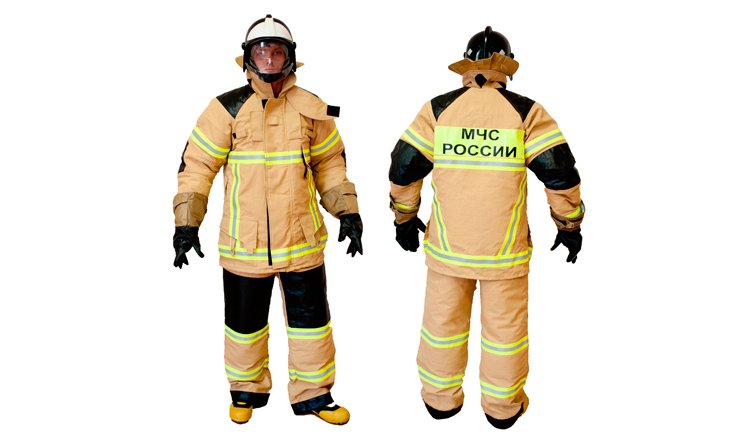
The jacket has a high collar, three patch pockets, one of which is designed for carrying a portable radio station. The clasp is a waterproof valve with three carabiners.
On the sleeves with a wadded layer of insulation, there are pads on the elbow zones, and wrist cuffs on the wrists. BOP II is most commonly used in temperate cold climates.
Reflective signaling elements are fixed in the lower part of the kit.
Class I Combat Clothing
Provides protection against severe overheating, high-speed and high-power heat flows, sudden bursts of open flames, multiple temperature fluctuations during operation in critical conditions.
Used by when extinguishing fires of a high degree of danger, rescue work, reconnaissance... It is produced using special fire-resistant, heat-resistant, heat-reflecting materials, which are impregnated and coated with specialized complex compounds.
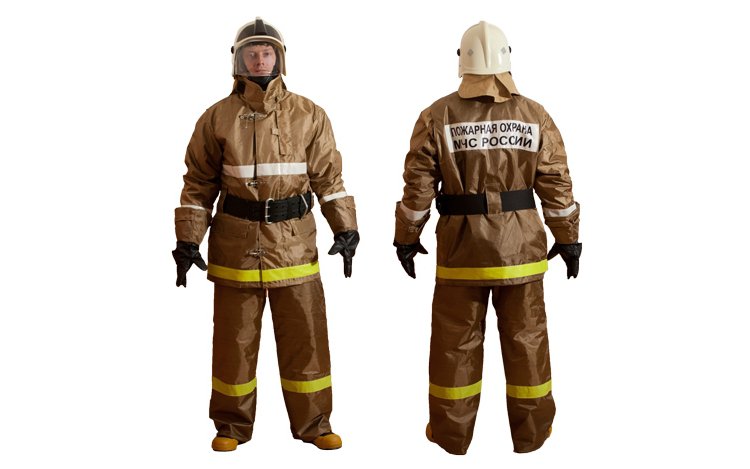
For the manufacture of such suits in order to obtain a waterproof layer, they use high-tech membrane material "w / o pores", which removes excess moisture, preventing its penetration inside.
The jacket and trousers included in the BOP III set have an insulating removable lining. In addition, the complete set includes: fur vest, hood, three-finger gloves, woolen comforter, and mandatory signaling elements, which are perfectly visible in heavy smoke and in the dark.
Uniforms of all classes are equipped with a long jacket and semi-overalls (or trousers) with detachable lining made of heat-insulating material. At the bottom of the set (jacket and trousers), there are signal light-returning stripes in three rows, wrist cuffs are provided on the wrists.
The sizes of the firefighter's combat clothing, as a rule, start from size 48, which allows not only men but also women to wear the uniform.
Storage and care rules
Firefighters are always ready to go on a call at any time, but, preferably, in dry combat clothing, which serves as reliable armor against burns and overheating. That's why the form must retain all basic properties after its use in the fire extinguishing zone- strength, tightness, integrity, and be absolutely dry. The BOP uniform is very comfortable and generally easy to care for.
Currently for drying uniforms in fire stations, special cabinet-modules are used with a working temperature of 40 ° C.
Since the form is often found in lesions with damaging factors and high temperatures, it quickly becomes dirty, saturated with dust and substances dispersed in the air during fires... To get the uniform in order, it is processed in dry cleaners with the necessary equipment and chemical cleaning compounds.
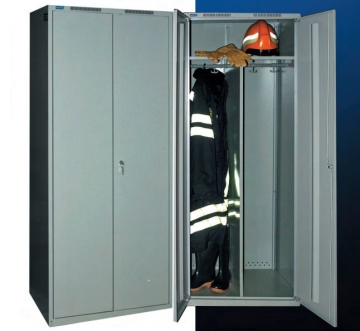 Also, clothes can be washed at temperatures up to 85 ° C... This greatly facilitates the maintenance of the uniform and contributes to a positive mood of each employee.
Also, clothes can be washed at temperatures up to 85 ° C... This greatly facilitates the maintenance of the uniform and contributes to a positive mood of each employee.
During storage, combat clothing is in a specially designated place - on open shelves... It develops in a certain sequence:
- the jacket is folded along the longitudinal seams, turned inside out, sleeves inward, back up. Jacket floors are folded. Then it is laid on a fire belt;
- the trousers are first folded along the longitudinal seams, then across two or three times so that the incision of the trousers is on top;
- after that, the trousers are put on the jacket with the belt to themselves, removing the straps into the folds of the trousers.
Ensuring the maximum possible safety of fire service personnel in conditions of increased threat to life and health, which are the usual working days of the squad, is the main goal of combat clothing.
The creation of new materials for the outer coating of firefighters' clothing, a waterproof and heat-insulating layer, which must have high strength characteristics, low thermal conductivity and at the same time be breathable and comfortable during hard and dangerous work, at present is in active development, in this area there are many new achievements.
For information on how suits for firefighters are made, see the video:






